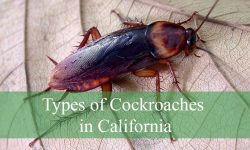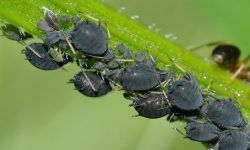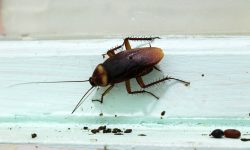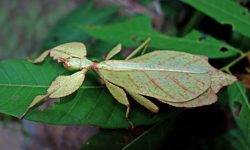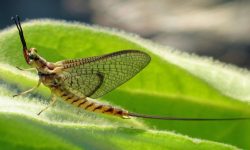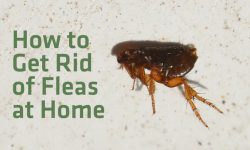Flying termites, also known as swarmers, are a clear indication that a termite colony is either nearby or already inside your home. These winged insects are usually seen during warmer months when they leave their nests to find new locations to establish colonies. While spotting a few flying termites may not seem like a big concern at first, it can quickly lead to severe damage if the infestation is left untreated.
Termites, especially when they form large colonies, can weaken the structure of your home by feeding on wood and other cellulose materials. Whether you’re seeing them inside or around your property, it’s essential to take quick action. Flying termites are looking for a place to start a new colony, and if they settle, you may face long-term structural damage.
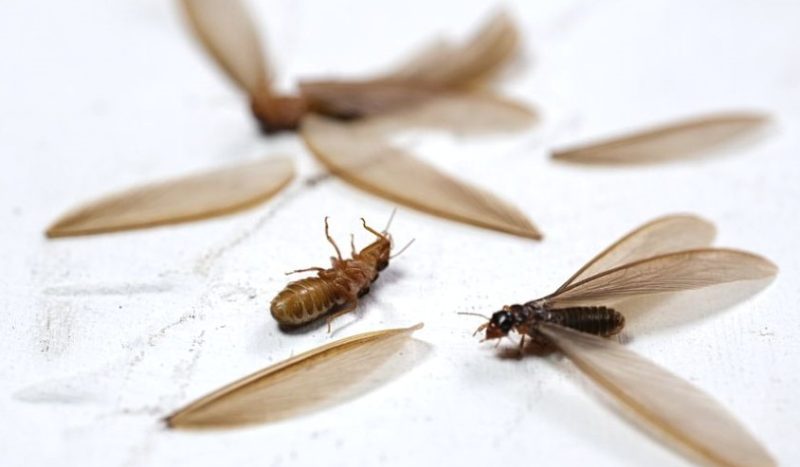
In this guide, we will provide 13 effective tips to help you eliminate flying termites and prevent them from wreaking havoc on your home. These tips range from natural remedies to professional treatment options, so you can choose the best solution based on your situation.
Effective Ways to Get Rid of Flying Termite
Whole-House Treatment
The most effective way to eliminate flying termites inside and around your home is to implement a whole-house treatment. This approach is particularly crucial if you notice that the flying termites are emerging from within your living space. Mature termite nests typically release flying termites every two to six years as part of their expansion efforts. If you have a mature colony in your home, you can expect to see these flying termites periodically unless the infestation is addressed.
A mature termite colony often indicates a significant infestation, which is best handled by professional pest control experts. For homes infested with drywood termites, a whole-structure treatment, such as fumigation or heat treatment, is usually the most effective option.
In the case of dampwood termites, it is essential to address any moisture issues and plumbing problems around your home while replacing any water-damaged wood to reduce the attraction for these pests. For subterranean termites, a combination of localized or fumigation treatments along with soil treatment is recommended to ensure thorough eradication.
Bug Zappers
Flying termites, specifically alates, are the only type of termite attracted to light. Bug zappers can be an effective tool for controlling these pests by luring them in with light and then electrocuting them. To maximize the effectiveness of bug zappers, it is crucial to minimize other light sources in and around your property. This includes turning off lights both indoors and outdoors, which increases the likelihood that flying termites will be drawn to the zapper.
If you notice discarded wings accumulating in a particular area, placing the bug zapper nearby can help target the swarm, as these wings indicate that termites are frequently flying in that vicinity. However, there are some drawbacks to using bug zappers. While they can effectively reduce the number of flying termites, they also attract more of them towards your home, potentially worsening the situation. Additionally, bug zappers can be harmful to beneficial insects, such as moths, which may also be drawn to the light.
Moreover, bug zappers tend to create a mess. When termites are vaporized, they produce a mist that can travel up to six feet, which can spread bacteria and debris throughout the area. To minimize this issue, it is advisable to keep bug zappers positioned low on the floor when used indoors. This placement helps reduce the dispersion of mist and bacteria upon activation. If using a hanging bug zapper, it’s best to avoid staying in the room until the swarm has dissipated, ensuring your safety and comfort while addressing the termite problem.
Use a Vacuum Cleaner
Another effective way to get rid of flying termites is by using a vacuum cleaner. If you notice termites flying around your home, a vacuum can quickly collect them. For this purpose, I recommend using a shop-vac, as these vacuums allow you to add a termiticide solution inside the canister. This means that once the termites are sucked in, they are exposed to the pesticide, increasing the chances of killing them.
If you can locate the exit point from which the flying termites are emerging, you can focus your vacuuming efforts there. It’s important to note that not all flying termites will leave their nest simultaneously, so be patient and ready to vacuum up more as they appear. After vacuuming, I also recommend injecting the exit hole with termiticide. This step ensures that any remaining termites inside the galleries are effectively eradicated.
Using a vacuum cleaner in conjunction with termiticide not only helps in immediate removal but also targets the source of the infestation, enhancing your overall termite control efforts. Remember to dispose of the vacuum contents properly, as they may contain live termites that could reinfest your home if not handled correctly.
Orange Oil Spray
Orange oil is known for its impressive 96% mortality rate on termites, making it one of the most effective natural remedies for dealing with these pests. If you notice that flying termites are emerging from an active gallery inside your home, you can inject orange oil directly into their exit point. Once the oil penetrates the wood, it will kill any termites that come into contact with it.
You can apply the same technique if you find an exit hole outside your home, provided it’s in wooden structures. However, it’s important to note that if the flying termites are originating from the soil, orange oil may not be effective in that scenario.
In cases where you see a swarm of flying termites inside your home, you can directly spray them with orange oil. However, it’s crucial to take safety precautions during this process. Wear protective clothing such as long sleeves, goggles, and a face mask to shield yourself from the solution. Additionally, be mindful of the wind direction while spraying to ensure that the solution doesn’t blow back toward you.
Using orange oil spray not only helps in managing flying termites but also serves as a natural and less toxic alternative to conventional pesticides, making it a preferred choice for environmentally conscious homeowners.
Foam Treatment
Foam treatment operates on a principle similar to that of orange oil, involving the injection of pesticides directly into the exit holes of termite nests. These pesticides can be delivered in either liquid or foam formulations. One significant advantage of foam and liquid treatments is their ability to penetrate deeper into the wood compared to dust treatments.
When applied, foam treatments expand or absorb into the wood, ensuring comprehensive coverage and allowing the solution to fill all adjacent termite galleries. This thorough distribution increases the likelihood of reaching termites that might be hidden within the wood structure. Any termites that come into contact with the foam or liquid solution will be effectively killed, providing an efficient means of eliminating infestations.
Foam treatments are particularly beneficial in targeting hard-to-reach areas and ensuring that the pesticide spreads uniformly throughout the infested wood, making them a reliable option for homeowners looking to manage termite problems.
Boric Acid
Boric acid can be utilized in multiple ways to effectively combat flying termites. One method is to spray them directly with a borate solution, which they will ingest, leading to their demise. Additionally, treating wood with borate helps prevent flying termites from establishing a colony after penetrating the wood. Studies indicate that boric acid can eliminate termites on wood with a mortality rate ranging from 70% to 89% within ten days.
Another effective application of boric acid is in its powder form. Research has demonstrated that powdered boric acid achieves a 100% mortality rate on termites after 15 days. To treat termites with boric acid, begin by dissolving 10 ounces of Borax in warm water. Mix thoroughly and transfer the solution into a spray bottle. Next, spray the infested areas, ensuring to repeat the application for seven consecutive days to allow the boric acid to penetrate the wood thoroughly.
For boric acid to be effective, it must seep evenly into the wood. To ensure optimal absorption, it is advisable to apply several layers to all sides of the affected wood.
Cover All Light Sources/ Bug Lights
Flying termites are uniquely attracted to light, making it essential to manage light sources around your home during swarming seasons. If you notice a swarm outside, covering your windows with thick curtains is a proactive step to prevent these pests from being lured into your living space. Additionally, it is advisable to turn off any outdoor lights or switch to bug lights until the swarm has passed. Bug lights or yellow lights are less appealing to termites than traditional white lights, making them a safer option during this time.
It’s important to understand that while reducing light can minimize the attraction, it won’t necessarily force termites to leave. If they are already swarming outside your home, they will likely remain in the vicinity regardless of light conditions. However, by eliminating or reducing light sources, you can effectively decrease the chances of flying termites being drawn into your home, thus helping to protect your property from potential infestations. Taking these precautions can contribute to a more effective overall termite management strategy.
Chemical Soil Treatment
Flying termites swarm primarily to mate and establish new colonies, which is why it’s crucial to prevent them from starting a nest inside your home. A highly effective method for achieving this is by treating your soil with a termiticide. To implement this treatment, begin by drilling holes approximately 2 feet deep and spaced around 12 to 15 inches apart throughout your yard, ensuring complete coverage of the area.
Next, using a pressurized sprayer, inject the liquid termiticide into the ground, spraying each hole for about 5 to 10 seconds. As a general guideline, aim to use around 1 gallon of termiticide for every 10 to 15 feet of treated area. This chemical barrier will effectively eliminate any flying termites that attempt to establish a nest in your soil upon contact.
One of the most effective termiticides available is Termidor, which is safe to use around plants and trees. However, it is essential to avoid treating areas with edible plants, as they should be planted in untreated soil or raised garden beds to ensure safety.
Cardboard Traps
Flying subterranean termites and dampwood termites are particularly drawn to moisture and cellulose, making cardboard traps an effective strategy for capturing these pests. The principle behind using cardboard traps is to lure flying termites to the cardboard rather than allowing them to settle in soil or wood.
To create cardboard traps, you’ll need:
- Cardboard or a box
- Water
- Termiticide (or orange oil)
Here’s how to make a cardboard trap:
- Cut the box into large pieces for outdoor use or smaller pieces for indoor placement.
- Stack 3 to 5 cardboard pieces to create a more appealing structure for the termites.
- For outdoor traps, add a thin layer of soil on each cardboard layer to enhance moisture retention.
- Soak the cardboard thoroughly with water to attract termites effectively.
- Place the cardboard traps in areas where you notice a swarm of flying termites.
If you see any termites on the traps, spray them with termiticide or orange oil to eliminate them immediately.
While cardboard traps can be a useful tool in termite control, it’s essential to note that they may yield mixed results and don’t always attract flying termites. This variability occurs because termites may find more suitable nesting locations, such as soil and rotting wood, rather than the traps you’ve set. However, when used in conjunction with other pest control methods, cardboard traps can help manage termite populations effectively.
Nematodes
Another effective method to prevent flying termites from establishing a nest and to eliminate an existing colony in your home is by using Beneficial Nematodes. These microscopic parasites serve as a biocontrol for various pests, specifically targeting insects while remaining harmless to plants, pets, and humans.
Beneficial Nematodes are particularly lethal to subterranean termites. They enter the termites’ bodies and release a pathogenic bacteria that can kill the insects within just 48 hours. In laboratory studies, nematodes have shown impressive results, eliminating up to 82% of termites within two weeks.
These nematodes are especially effective in soft, moist soil, which allows them to move easily and effectively attack termite colonies. To apply Beneficial Nematodes, follow these steps:
- Mix the Solution: Combine the entire pack of Beneficial Nematodes with one gallon of water.
- Let it Sit: Allow the mixture to rest for 10-15 minutes to activate the nematodes.
- Transfer to a Spray Bottle: Pour the solution into a spray bottle for easy application.
- Apply: Spray the mixture onto infested wood, directly onto the soil surrounding your home, and even on visible mud tubes.
For optimal results, apply the nematode solution daily for at least two weeks. This method is particularly suited for targeting swarming termites you might observe outside your home. By spraying around your yard, you can help prevent subterranean swarmers from starting colonies in the soil near your residence, thereby reducing the risk of future infestations.
Beauveria Bassiana
Beauveria Bassiana is a natural fungus widely used in insect control applications. This fungus infects a range of invertebrates upon contact, including termites, and can achieve a 100% mortality rate within ten days.
Similar to nematodes, Beauveria Bassiana is most effective when used against swarmers observed outside your home. It prevents flying termites from establishing colonies in the soil and also targets any existing termite infestations around your home.
To use Beauveria Bassiana for termite treatment, follow these steps:
-
- Prepare the Solution: Mix Beauveria bassiana with water according to the instructions on the product.
- Spray the Area: Using a spray bottle, apply the solution around your yard and the perimeter of your home.
Once the fungus is applied, it begins to take effect around the seventh day, fully eliminating termites by day ten.
The best part about Beauveria Bassiana is that it’s considered safe for humans and pets, making it an excellent eco-friendly option for termite control.
Essential Oils
Essential oils provide a natural and effective solution to both repel and kill termites that may be infesting the wood around your home. Research has demonstrated that essential oils can achieve an impressive mortality rate of 70% to 100% within just three days of application, making them a popular non-toxic alternative to chemical treatments.
Some of the most effective essential oils for eliminating termites include:
- Orange Oil: Known for its strong scent and ability to kill termites on contact.
- Garlic Oil: Effective as both a repellent and a killer when applied directly to termite colonies.
- Clove Oil: Renowned for its insecticidal properties, clove oil is highly toxic to termites.
How to Use Essential Oils for Termite Treatment?
- Direct Application: Spray essential oils directly on termites or infested wood surfaces using a pressurized sprayer with a fine-point nozzle. This allows the solution to penetrate small entry points and reach termites hiding deep inside.
- Drilling and Injecting: If entry points are hard to find, drill holes spaced 8-12 inches apart until reaching the hollow part of the wood. Insert the sprayer nozzle and inject the essential oil for 2-5 seconds to target hidden colonies.
- Exterior Wood Treatment: Apply essential oils to the exterior wood surfaces to create a barrier, preventing termites from entering your home.
Once termites inside your home have been eradicated, the essential oils continue to act as a natural repellent, preventing future infestations. It’s generally recommended to apply essential oils more frequently on exterior surfaces, especially in areas prone to high humidity or termite activity.

